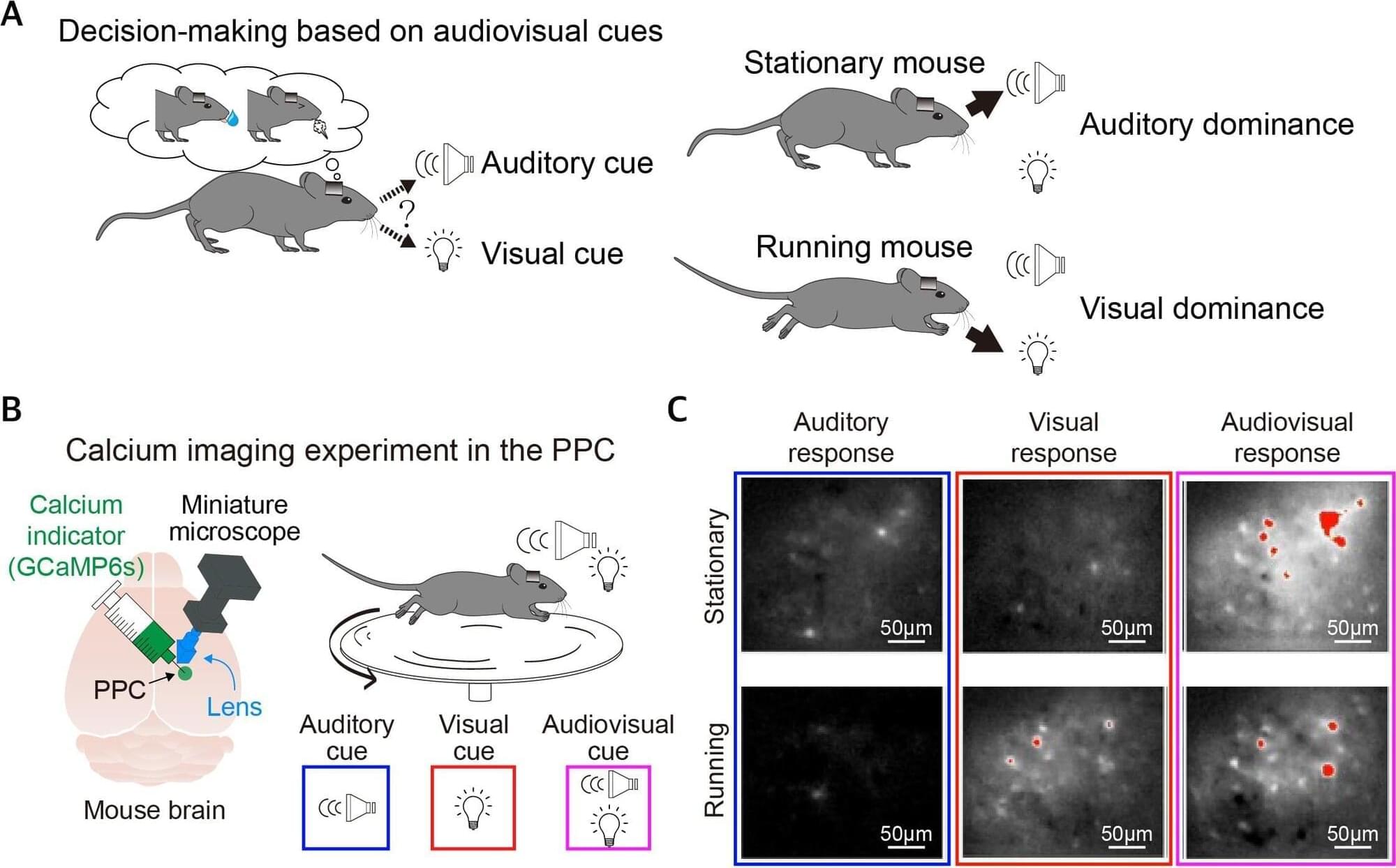A research team at the Institute for Basic Science (IBS) has uncovered a fundamental principle of how the brain prioritizes vision and hearing differently depending on whether we are still or in motion. The study, led by Dr. Lee Seung-Hee, Associate Director of the IBS Center for Synaptic Brain Dysfunctions and Associate Professor at KAIST, provides new insights into how movement alters the brain’s sensory decision-making process.
In daily life, we constantly process visual (sight) and auditory (sound) information to navigate the world. For instance, when watching a movie, our brain seamlessly integrates images and sounds to create a complete experience. However, when moving—such as when walking on a busy street—our brain may prioritize visual information over sound.
Until now, it was unclear how the brain decides which sense to prioritize in different situations. This is particularly relevant for individuals with sensory processing disorders such as autism or schizophrenia, where the brain may struggle to integrate sensory information correctly. Understanding how the brain naturally shifts between sensory inputs could lead to better treatments for these conditions.









